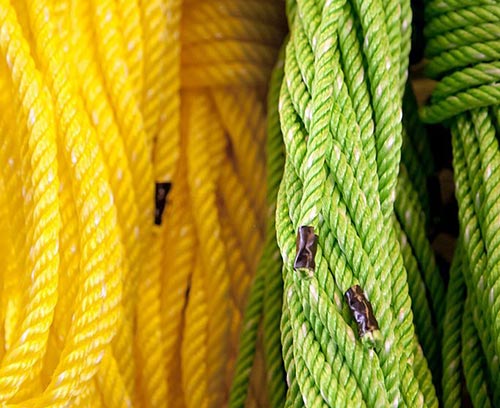Different types of rope can be used in various types of situations. But some of these ropes look the same even if they have other functionalities, making it difficult for users to recognize them. Two of these ropes are polyester and nylon ropes.
But what are the differences between nylon vs polyester rope? These two ropes can be differentiated by their strength, flexibility, water absorption, sunlight resistance, and abrasion feature. Learn more about these differentiating factors below.
| Differentiating Factor | Nylon Rope | Polyester Rope |
| Strength | Stronger Under Steady Pressure | Retains Strength When Wet |
| Flexibility | High | Low |
| Water Absorbency | Not for Water Applications | Ideal for Water Applications |
| Heat Resistance | Less Heat Resistance | More Heat Resistance |
| Abrasion | Lesser Abrasion Resistance | Greater Abrasion Resistance |
Strength
Comparing these two ropes in terms of strength depends on various situations. When it comes to weight-to-weight ratio, nylon ropes are generally stronger compared to polyester ropes. Even if polyester comes with more thickness, it still has a finer thread which can affect its strength.
Nylon is also slightly stronger than polyester ropes when the two ropes are under steady pressure. Even if the two are the strongest of all fiber-made ropes, nylon has the ability to expand when the pressure is not steady. When used in shock jobs, nylon is generally stronger.
Please note that the difference in strength is minimal when both are dry. On the other hand, polyester retains its strength when wet, which means polyester ropes are so much stronger compared to nylon ropes when wet.
Flexibility

These two ropes can also be compared to the level of flexibility they possess. It is said that the nylon rope can be stretched up to 20% without affecting the rope’s overall strength. This flexibility is the reason nylon ropes are effective for jobs that revolve around pulses and shocks.
More importantly, nylon can stretch whenever a force is applied suddenly but has the ability to return its strength. This type of memory feature of the nylon allows the rope to absorb any force that can cause the rope to stretch without losing its original strength.
On the other hand, polyester rope has lesser flexibility compared to nylon ropes. It is said that it can only stretch by up to 10% without losing its original strength. So, the best usage for polyester ropes is in flag poles, tie-downs, and similar activities.
In other words, nylon has more flexibility and is stretchable especially when this type of rope absorbs water. Because of the absorption, nylon ropes will also not hold dye properly and tend to fade quickly when exposed to the sun.
Water Absorbency

We can also differentiate these two ropes according to their ability to absorb water. A lot of users have been comparing nylon vs polyester vs polypropylene rope, but I feel that these two ropes do not do well in water compared to polypropylene.
Unfortunately, these two ropes can sink in water but still have differences. Although nylon has strength when it is dry, it can significantly reduce its strength once it absorbs water. The fiber inside the nylon rope can be sagged and will need a long time to dry.
On the other hand, even if polyester ropes do not absorb water, they can retain their normal level of strength when submerged in water. Meaning, polyester ropes are much better compared to nylon ropes when it comes to water applications.
Heat Resistance
You can also tell the difference between nylon and polyester ropes by their ability to resist heat. In this differentiation factor, polyester offers more heat resistance than nylon rope, even if both are highly resistant to heat because of the presence of fiber.
So, nylon will sustain more damage from sunlight or any other heat type when exposed. But do not worry; it will take a lot of heat or a significant amount of time exposed to sunlight before these two ropes feel the effect of the heat.
To be specific, a nylon rope cannot withstand the effect of heat when the temperature is already at 210 degrees Celsius. On the other hand, the polyester rope will start showing damage from the heat when the temperature reaches 260 degrees Celsius.
Rope Abrasion
Nylon and polyester ropes can also be differentiated by the rope’s ability to resist abrasion. We all know that abrasion is the rope’s worst enemy, and many factors can cause abrasions in ropes.
So, when it comes to abrasion, polyester ropes have an edge compared to nylon ropes. In fact, nylon has the tendency to sustain minor snags when it is used. It can be affected by wearing and thinning when it reaches its stress points.
Conclusion
Comparing nylon vs polyester rope allows us to differentiate the two and teach us their best applications. If you need a rope that stretches a little and can return to its original strength.
On the other hand, polyester ropes can be used in a wide array of applications because of their durability and strength and the additional benefits they can give the user. In other words, polyester ropes have more functionalities and usage than nylon ropes.

